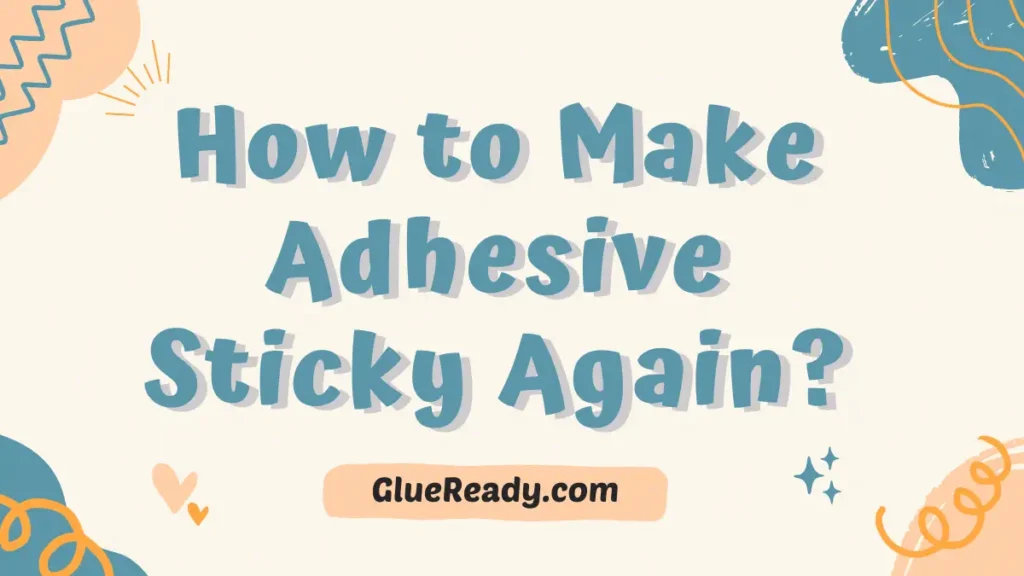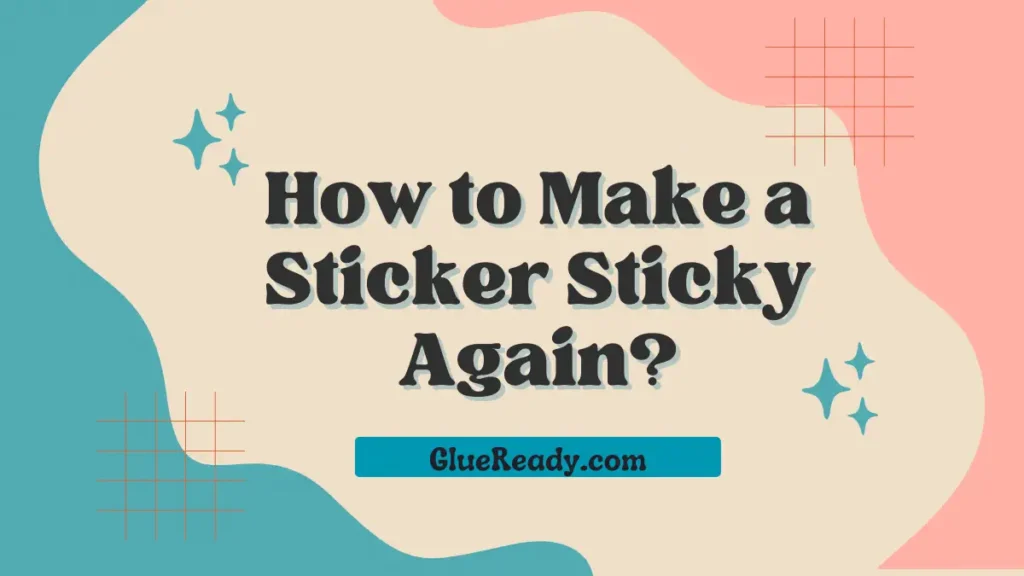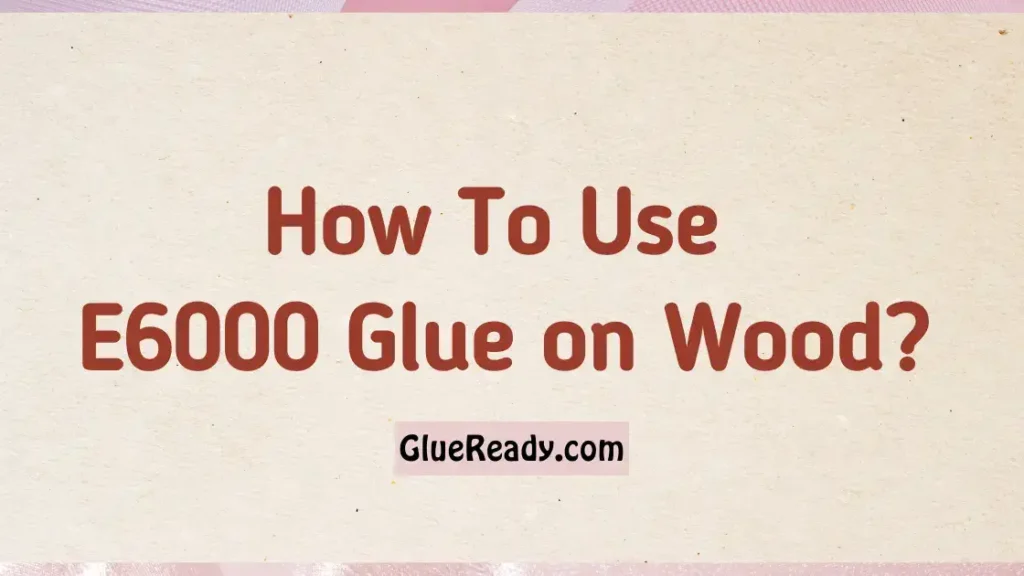How To Remove E6000 Glue from Different Materials?
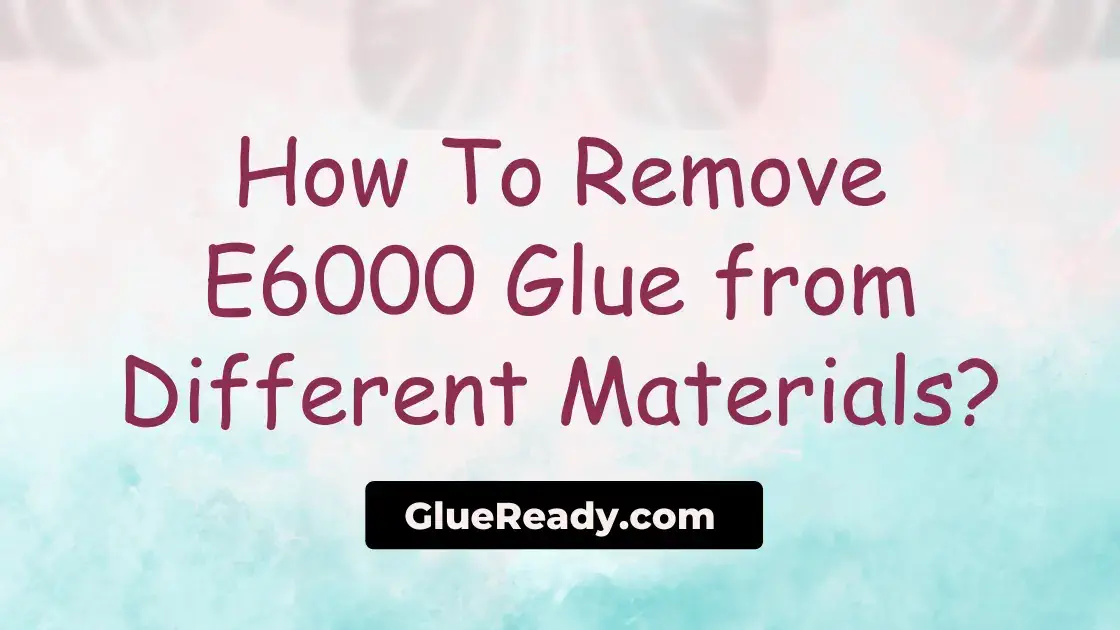
E6000 glue is a powerful adhesive that can bond almost any material, from wood and glass to metal and fabric. It is also waterproof, flexible, and resistant to heat and chemicals.
However, this also means that if you make a mistake or wish to separate the glued items, it may prove difficult to do so.
Fortunately, there are some methods that can help you remove E6000 glue without damaging the surface or the object.
Here are some tips on how to remove E6000 glue from different materials.
Know More: Why Does E6000 Glue Not Working?
How to Remove E6000 Glue from Plastic?
Plastic is another versatile material that E6000 glue can be used on, especially for crafts and repairs.
However, removing E6000 glue from plastic can be tricky, as it can melt some types of plastic and leave behind a sticky mess. To remove E6000 glue from plastic, you will need:
- Baking soda
- Oil (any type)
- A cloth or a paper towel
- A scraper or a knife
- Soap and water
The steps are:
- Combine 1 part baking soda with 1 part oil in a small bowl. You can use any type of oil, such as coconut or olive oil. Mix them well until they form a paste. To scrub off the glue, baking soda will act as an exfoliant.
- Apply the paste to the glue and let it sit for 15 minutes. The oil will help dissolve the glue and make it easier to remove.
- Use a cloth or a paper towel to wipe off the paste and the glue. You may need to repeat this step several times until the glue is gone.
- Use the scraper or the knife to scrape off any remaining glue that is hard to remove. Be careful not to damage the plastic or cut yourself.
- Wash the plastic with soap and water to remove any traces of oil or baking soda. Dry the plastic with a clean cloth or paper towel.
Know More: How to Use E6000 Glue on Plastic?
How to Remove E6000 Glue from Fabric?
Fabric is another common material that E6000 glue can be used on, especially for clothing and accessories.
However, removing E6000 glue from fabric can be challenging, as it can stain and stiffen the fabric and make it unwearable. To remove E6000 glue from fabric, you will need the following:
- A freezer
- A plastic bag
- A butter knife or a spoon
- Laundry detergent
- A washing machine
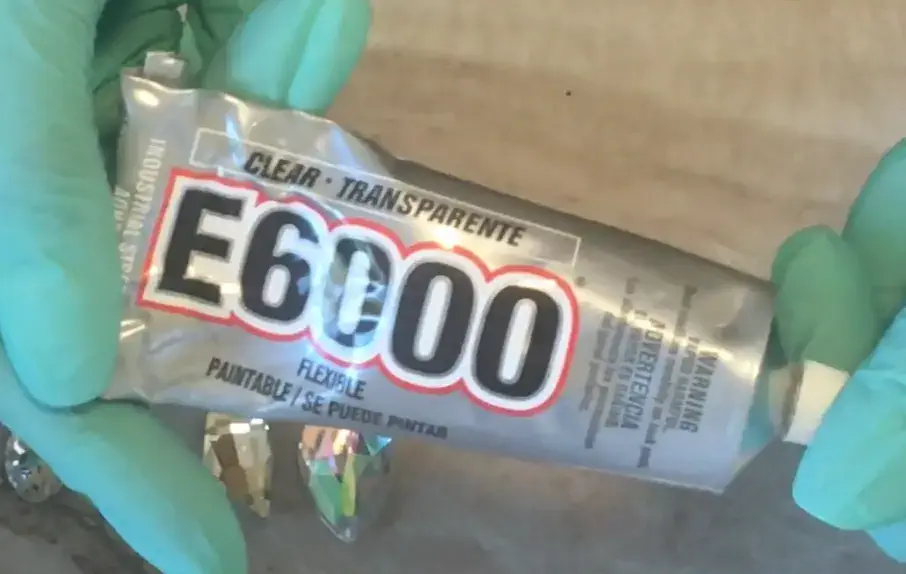
The steps are:
- Put the fabric with the glue in a plastic bag and freeze it overnight or for several hours. The cold temperature will make the glue brittle and easier to break off.
- Take out the fabric from the freezer and use the butter knife or the spoon to chip off as much glue as possible. Be careful not to tear the fabric or damage it further.
- Wash the fabric with laundry detergent in a washing machine according to its care instructions. The detergent will help loosen and remove any remaining glue residue.
- Dry the fabric as usual.
Know More: How To Use E6000 Glue on Fabric?
How to Remove E6000 Glue from Glass?
Glass is one of the most common surfaces that E6000 glue can be used on, but it can also leave behind a stubborn residue that can ruin the appearance of your glassware or windows. To remove E6000 glue from glass, you will need the following:
- A razor blade or a scraper
- Acetone or nail polish remover
- A cloth or a paper towel
- Soap and water
The steps are:
- Use the razor blade or the scraper to gently scrape off as much glue as possible. Be careful not to scratch the glass or cut yourself.
- Apply some acetone or nail polish remover to the cloth or the paper towel and rub it over the remaining glue residue. Acetone is a solvent that can dissolve E6000 glue, but it can also damage some plastics and paints, so test it on a small area first.
- Repeat step 2 until the glue is completely removed. You may need to use more acetone or nail polish remover if the glue is thick or old.
- Wash the glass with soap and water to remove any traces of acetone or nail polish remover. Wipe the glass clean with a paper towel or clean cloth.
Know More: How To Use E6000 Glue on Glass?
How to Remove E6000 Glue from Wood?
Wood is another popular material that E6000 glue can be used on, especially for furniture and crafts.
E6000 glue can be tricky to remove from wood since it penetrates into the pores and fibers of the wood and can cause significant damage if not removed correctly.
To remove E6000 glue from wood, you will need:
- A heat gun or a hair dryer
- A putty knife or a spatula
- Mineral spirits or turpentine
- A cloth or a paper towel
- Sandpaper (optional)
- Wood finish (optional)
The steps are:
- Use the heat gun or the hair dryer to heat up the glue until it softens. Be careful not to burn the wood or yourself.
- Use the putty knife or the spatula to pry off the glue from the wood. Do this gently and slowly, as you may damage the wood surface if you pull too hard.
- Apply some mineral spirits or turpentine to the cloth or the paper towel and wipe off any remaining glue residue. Mineral spirits and turpentine are solvents that can dissolve E6000 glue, but they can also strip off the wood finish, so test them on a small area first.
- Repeat step 3 until the glue is completely removed. You may need to use more mineral spirits or turpentine if the glue is thick or old.
- If the wood surface is damaged or discolored, you may need to sand it lightly with sandpaper and apply a new coat of wood finish.
Know More: How To Use E6000 Glue on Wood?
How to Remove E6000 Glue from Metal?
Metal is another durable material that E6000 glue can be used on, especially for jewelry and hardware.
However, removing E6000 glue from metal can be difficult, as it can adhere strongly and resist most solvents. To remove E6000 glue from metal, you will need:
- Acetone or nail polish remover
- A cloth or a paper towel
- A razor blade or a knife
- A rag, a brush, or a sponge
- Soap and water
The steps are:
- Apply some acetone or nail polish remover to the cloth or the paper towel and rub it on the glue. Leave it to soak for 20 minutes, then scrub the surface with a rag, a brush, or a sponge.
- Use the razor blade or the knife to scrape off any remaining glue that is hard to remove. Be careful not to scratch the metal or cut yourself.
- Repeat steps 1 and 2 until the glue is completely removed. You may need to use more acetone or nail polish remover if the glue is thick or old.
- Wash the metal with soap and water to remove any traces of acetone or nail polish remover. Dry the metal with a clean cloth or paper towel.
Final Thoughts
E6000 glue is a versatile and strong adhesive that can bond many materials together, but it can also be hard to remove if you need to undo your work or fix a mistake.
Depending on what material you are working with, you may need different tools and methods to remove E6000 glue safely and effectively.
Always test your solvents on a small area first before applying them to larger areas, and wear gloves and eye protection when handling them.
If you follow these tips, you should be able to remove E6000 glue from glass, wood, fabric, plastic, metal, and other surfaces without too much trouble.



